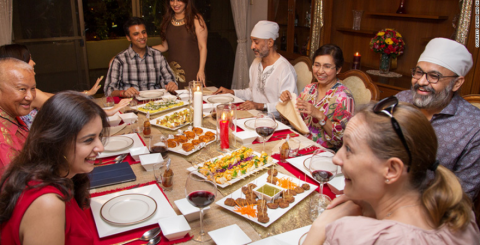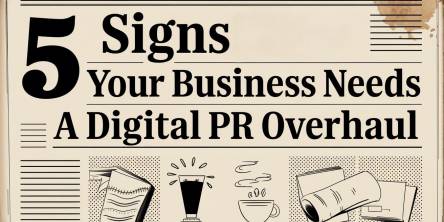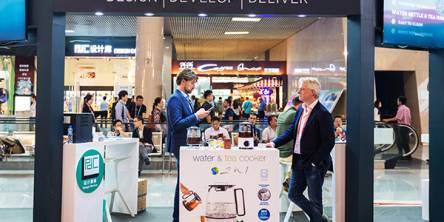The 3 Must-Dos For F&B PR To Be Culturally Sensitive In The Region

Successful food and beverage (F&B) public relations (PR) goes beyond communicating the best tastes and prices, but a firm understanding of the underlying relations of F&B with culture, language and religion.
The Southeast Asian region is home to a kaleidoscope of cultural differences, and F&B PR professionals have to be sensitive to these differences in order to communicate a brand that successfully resonates with the hearts of the target consumers. Here are the top 3 things PR agents must take care of while doing F&B PR:
Respect The Locals’ Practices
Every country in the region has different food restrictions due to their cultural differences and religious practices, and this calls for PR professionals to be discerning in knowing what specific types of food would be suitable in each country.
Islam, Hinduism and Buddhism are some key religions in the Southeast Asian region that follow certain dietary guidelines, such as only consuming Halal or (lacto)vegetarian food. As such, in the event of media tastings, PR agents have to be crystal clear about the religious profiles of the target media and their dietary restrictions, if any. This is a critical step that will demonstrate a brand’s respect and sensitivity for individuals’ cultural differences and religious practices.
Besides religious beliefs, cultural backgrounds of the target consumers are also important to take note of. For example, there is little or no acceptance of the consumption of exotic meats across many cultures. As such, a Facebook post by a local online grocery store to sell exotic meats like koala sausages and panda meat was considered offensive even for an April Fool’s joke. The intention of the campaign was to raise awareness on the plight of endangered animals and the perils of illegal animal trafficking. However, the way the campaign was executed was distasteful and ill-judged, as the brand disregarded Singaporeans’ cultural norms, hence drawing much flak from the locals and the large expat community in the country.
By respecting and catering to the locals’ cultural and religious practices, PR experts are essentially sending the right brand messages to help achieve mutual respect between both parties that will enable positive rapport building and garner support for the brand.
Know The Festivals
The variety of cultural festivals celebrated in the region, from Chinese New Year to Hari Raya and Christmas, is never a complete celebration without feasting. F&B plays a huge role in these events, and PR agencies should take time to research on the target country’s festivals and incorporate them into the calendar of a F&B brand’s PR efforts. Given the huge scale of these festivals, there is much potential to leverage on them by planning to coincide a restaurant opening, festive menu launch or special promotions with these celebratory dates. This positions F&B brands to be culturally aware and relevant to their target consumers.
Pay Attention To Language Use
Every culture is embodied by a different language, and with no two languages being the same in terms of meaning and structure, it is essential to pay attention to language use in the culturally diversified Southeast Asia. The same words in different languages may convey a totally different meaning and often this may be overlooked without a professional and astute eye when doing translation work for any publication materials. Especially in F&B PR, where products are meant for consumption, an inappropriate translation will lead to consequential miscommunication of ideas.
What works in one country may not work in another, especially in a culturally and religiously diverse region such as Southeast Asia. Regional PR agencies have to ensure research is done to acquire solid knowledge and understanding of the target locals’ language and cultural practices. Local PR agencies would be the best bet since they are experts in the local market and culture.
Similar Articles
In today’s fast-paced digital world, it’s no longer enough for businesses to rely on traditional marketing alone. A strong online presence is crucial, and that’s where digital PR comes in.
Having a good image and reputation is crucial for any company regardless of its growth stage, revenue, and size. Companies need to ensure that their image is not sullied by anything, especially their employees.
Fast Moving Consumer Goods or FMCGs are very commonly used all around the globe. These goods have a very small shelf life and are usually items of daily use. Food, juices, and hygiene products are all examples of FMCG products. Because of their short life span and use in daily life, these products are usually in high demand.
Whether you're a marketing maverick or just trying to get your brand off the ground, these tips are your secret weapon to get your brand the reach it deserves.
PR or Public Relations, basically connects the company to the people. This sounds very simple and easy to achieve, but in reality, it is a bit more complex than one would expect.
Learn about a few reasons why it is essential for pharmaceutical companies to collaborate with a PR agency to communicate well among their audiences and stakeholders.
In a modern competitive and tech-based world, it is a challenge to improve brand awareness in the target market. If you have started a new business, it is essential that people identify with the brand of your company. You need to rationally chalk out a clear plan to meet the goal.
Today corporate gifting is very popular amongst the big companies and for a good reason. But, there are a lot of things that you need to keep in mind in order to succeed in the corporate gifting scene.
Currently, goods and services promotion is one of those must-have basics of a successful business. Even if you produce the best product in the world, no one would ever know about it unless you incorporate promotion as a routine activity into your schedule.








